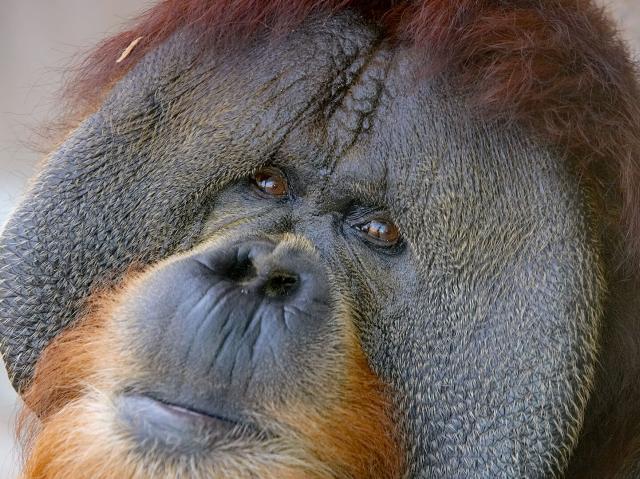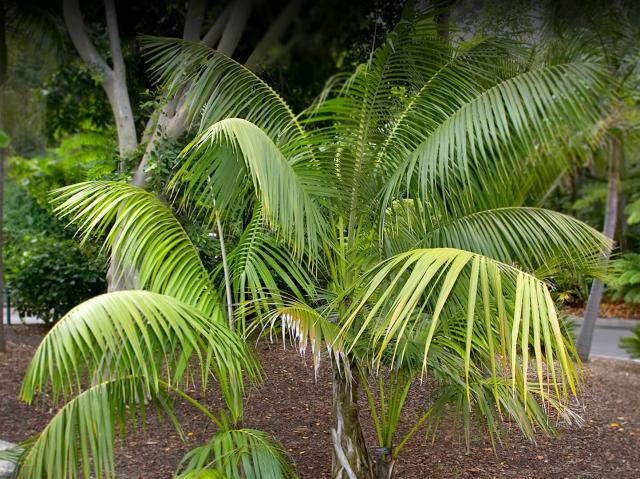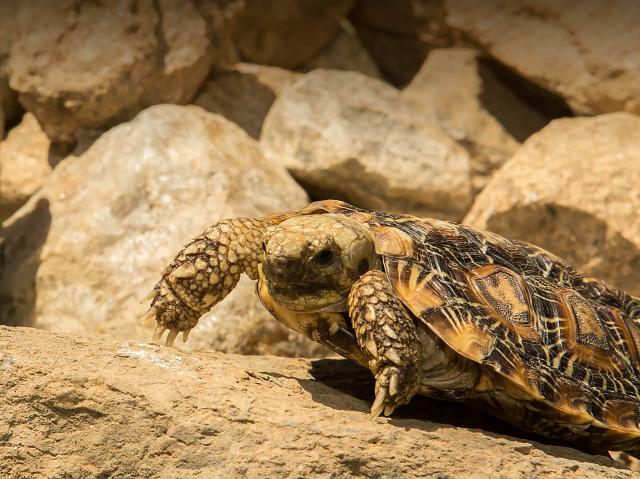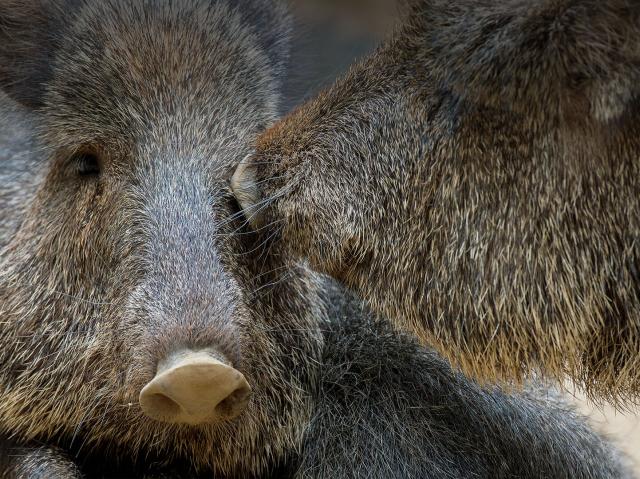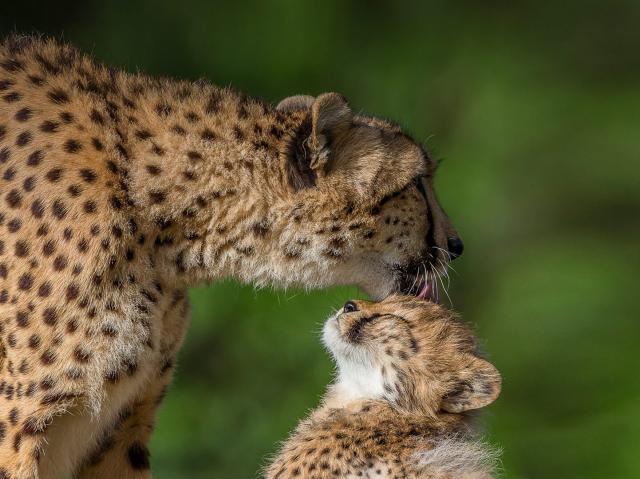
Spiral-horned Antelope

- CLASS: Mammalia (Mamals)
- ORDER: Artiodactyla
- FAMILY: Bovidae
- GENERA: Ammelaphus, Strepsiceros, and Taurotragus
- SPECIES: 8

ABOUT
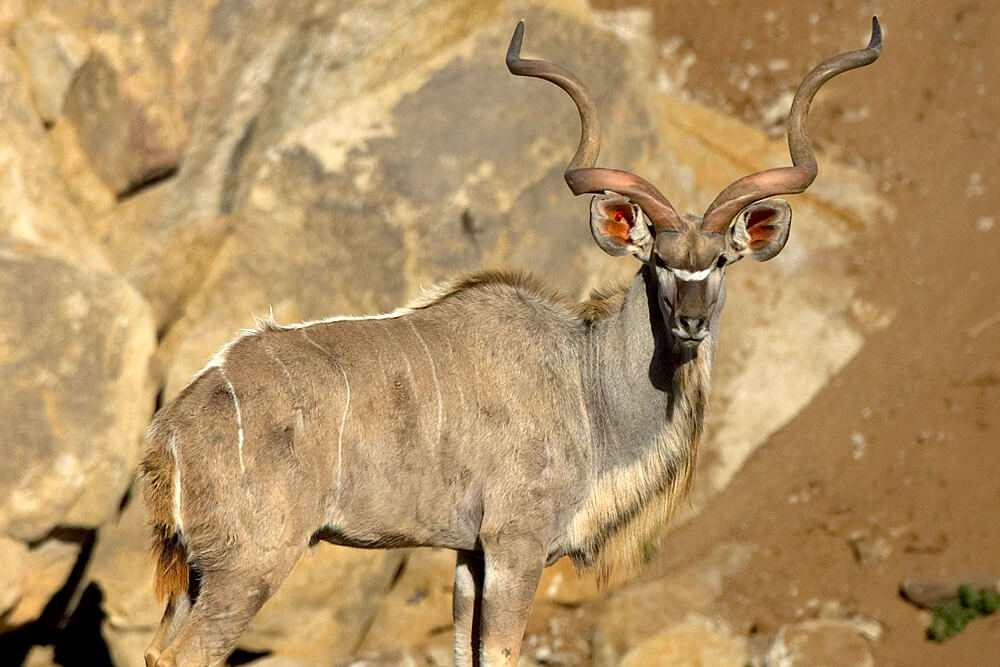
Built-in corkscrews: If an ungulate is called a spiral-horned antelope, you'd better believe it’s going to have a set of spiraling horns on its head! Kudu and eland fit this category. The bulls (males) have these impressive hood ornaments. In elands, the cows (females) have them, too.
So, how do the horns grow in a spiral? The twisting is a result of a growth pulse. The horn material grows faster and thinner at certain times, and then thicker and slower at other times. Genes control growth pulses.
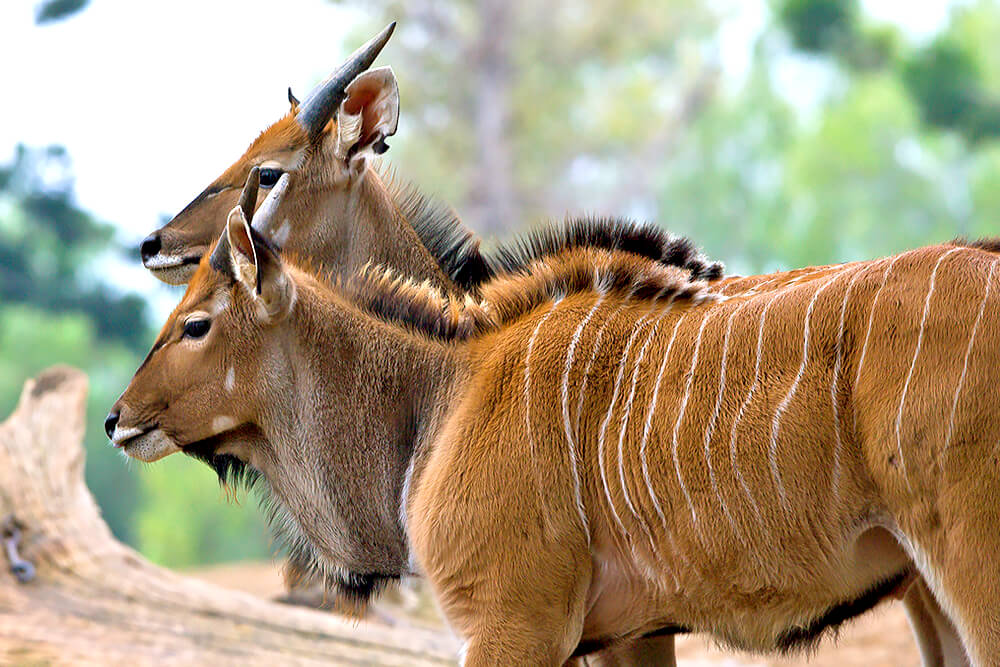
Spiral-horned antelope bulls tend to be heavier and darker than the cows. In eland, the bulls' horns are always heavier and longer than the cows' and often have more spirals. The spirals help the bulls lock horns with each other when engaged in fights over cows. As its name suggests, the giant eland is the world's largest antelope.
Greater or Cape kudu bulls have the longest horns. From tip to tip, the horns can grow up to 28 inches (71 centimeters) long. But if you were to straighten out the spirals, the horns would be up to 35 inches (89.5 centimeters) long.

Kudu have a sleek, brownish gray coat with vertical white stripes on the body. These help make them hard to find in the dappled sunlight coming through trees. Lesser kudu also have white chevrons between their eyes and white patches on their neck. The cows and calves are redder in color, which gives them better camouflage in their woodland habitat.

Eland are light brown but may turn gray with age. Thin, vertical white stripes on the side are barely visible. Both bulls and cows have dewlaps, although these are much larger on the bulls.
Antelope are popular prey for Africa’s large carnivores. If danger approaches, kudu and eland may freeze, run, or jump away, depending on the circumstance. Bulls are often lost to lions, cows to spotted hyenas. Leopards, cheetahs, and African wild dogs prey on subadults and calves. In some parts of Africa, only half of spiral-horned youngsters live past six months. It’s a tough life out there!
HABITAT AND DIET
The six spiral-horned antelope species live in areas of Africa below the Sahara desert. They are able to eat a variety of food, depending on what's available, unlike mammals with more specialized diets. Greater kudu are found in woodland and hilly areas of eastern, central, and southern Africa. Other kudu species live in thicket vegetation, dry woodlands, or savannas in eastern and southern Africa. Common and giant eland live in savanna and woodland habitats of southern, central, and eastern Africa.
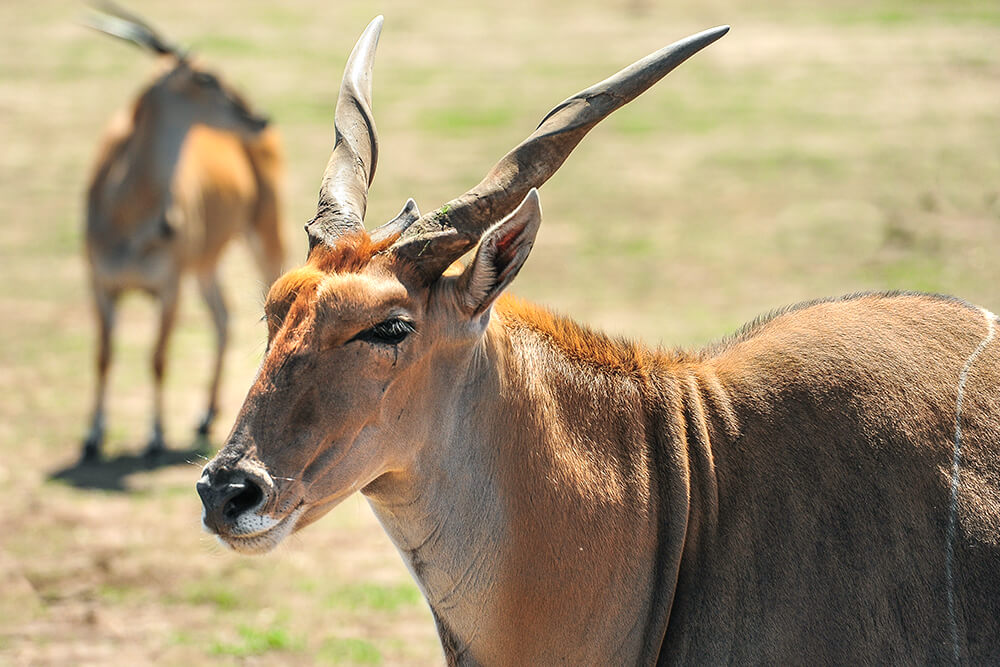
In general, these antelope spend their day foraging, resting to ruminate, moving to another area, and standing alert. They seek cover during the heat of day and groom themselves in the late afternoon. Giant eland are more active at night.
As browsers, the muzzle of eland and kudu species is more slender and narrow than that of their grass-eating relatives. They can pick out high-quality foods such as fruits, seedpods, flowers, leaves, and bark. Spiral-horned antelope have small, low-crowned teeth. Their digestive systems don't process fibrous food, such as grass, as well as their cattle relatives. When eating, they use their massive horns to break off branches to reach tasty leaves. Giant eland bulls break branches to provide food for the cows and calves! The horns are also handy for digging up thick-leafed plants, melons, bulbs, roots, and onions.
FAMILY LIFE

As most eland and kudu live in areas with thick vegetation, they form small herds. Greater kudu herds consist of 3 to 10 cows and their young. Bulls are usually solitary or live in loose all-male groups except during the breeding season. Lesser kudu are not as social as greater kudu, usually living alone or in pairs, and are more active at night. Eland are social antelope that live in herds of 25 to 70.
Spiral-horned antelope are quiet most of the time. When alarmed, they make a sharp barking sound. Greater kudu win the prize for the loudest alarm bark in the African antelope category! But during courtship, adult males whine, grunt, knee-click, bleat, or make gasping sounds—anything to impress the ladies! Mature males may spar with each other for breeding rights by pushing and twisting and interlocking their horns.
These antelope also use vegetation to hide their newborn calves during the day. The cow tucks her single newborn away and visits it for nursing, which keeps the calf out of sight from predators. It is called a tucker baby. A tucker baby only comes of out hiding when it hears its mother call, letting the baby know it’s time to eat. Every tucker baby knows the sound of its own mother's call.

Kudu and eland calves are weaned at around six months old. Male offspring stay with the mother for up to two years. They then live with other young males for the next two to three years and become solitary when mature, at four to five years.

CONSERVATION
Eland are raised like domesticated cattle in parts of Africa for their hide, milk, and meat. In other parts of Africa, both eland and kudu are hunted in an unsustainable manner for their meat. Some hunters kill them just to take their spiral horns as trophies. Lesser kudu Tragelaphus imberbis are classified as threatened by the International Union for Conservation of Nature.
By supporting San Diego Zoo Wildlife Alliance, you are our ally in saving and protecting wildlife worldwide.
LIFE SPAN
7 to 20 years, depending on species
Age of maturity: 6 months to 2 years for females, 5 years for males
YOUNG
Gestation 7.5 to 9 months, depending on species
Number of young at birth: 1
Weight at birth: 9 to 66 pounds (4.1 tp 30 kilograms), depending on species
Age of maturity: 6 months to 2 years for females, 5 years for males
SIZE
Length: Longest - giant eland Taurotragus derbianus males, up to 9.5 feet (2.9 meters) long; shortest - southern lesser kudu Ammelaphus australis males, 4.9 to 5.5 feet (1.5 to 1.8 meters) long
Height: Tallest - giant eland males, 4.9 to 5.8 feet tall at shoulder; shortest - southern lesser kudu males, 3.2 to 3.6 feet (1 to 1.1 meter) tall at shoulder
Horn length: Longest - greater kudu, up to 28 inches from tip to tip and 35 inches (89.5 centimeters) straight-line horn length
Weight: Heaviest - giant eland, 970 to 2,094 pounds (440 to 950 kilograms); lightest - bushbuck Tragelaphus scriptus females, 90 pounds (41 kilograms)
FUN FACTS
Young common eland can leap over a 10-foot-tall (3 meter) obstacle from a standing position.
Eland can survive up to a month without fresh water.




